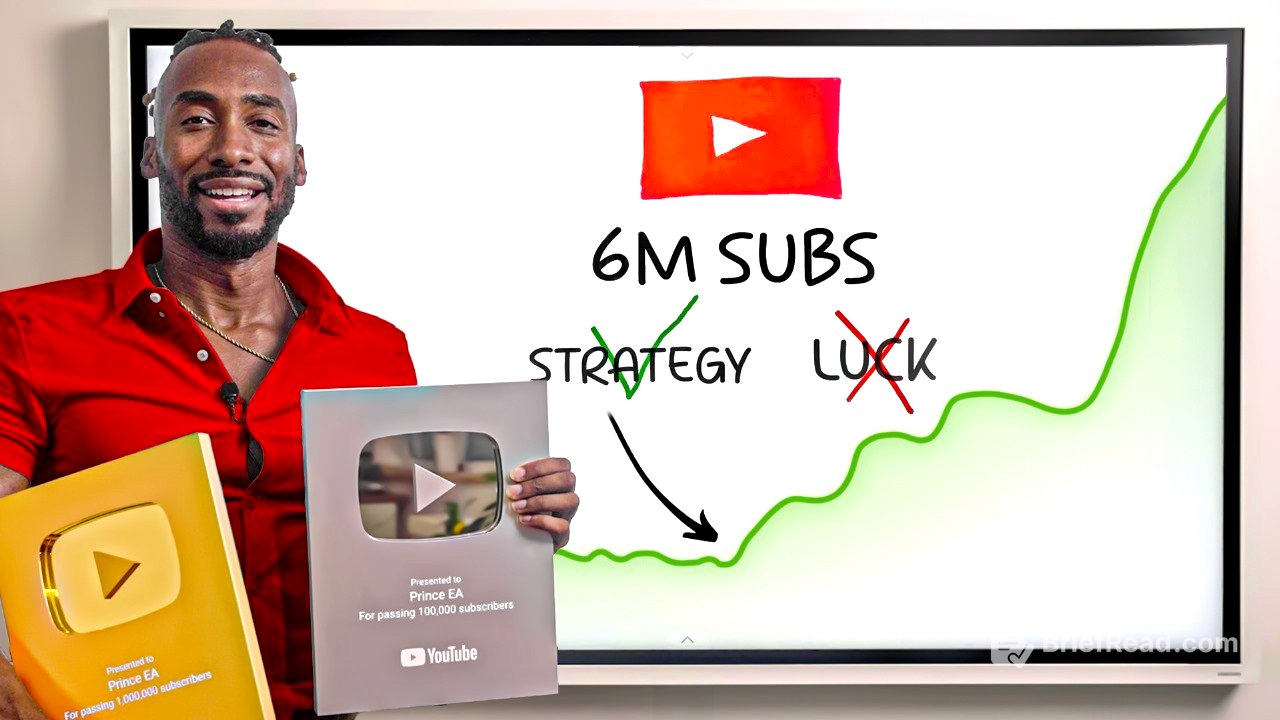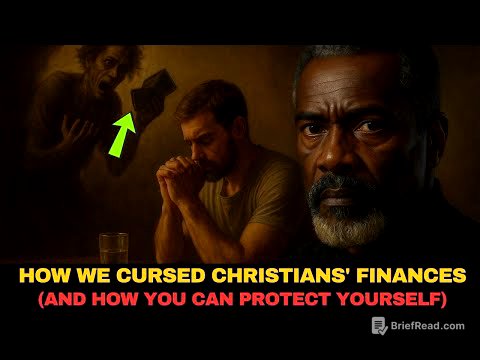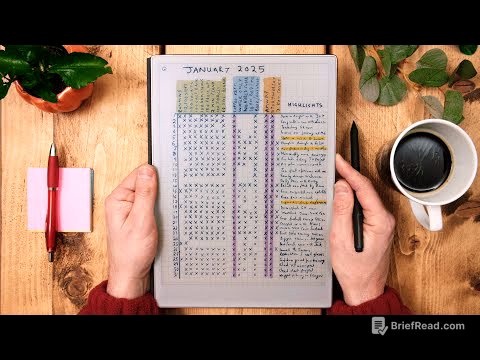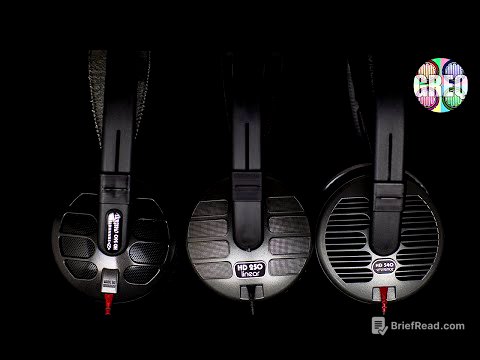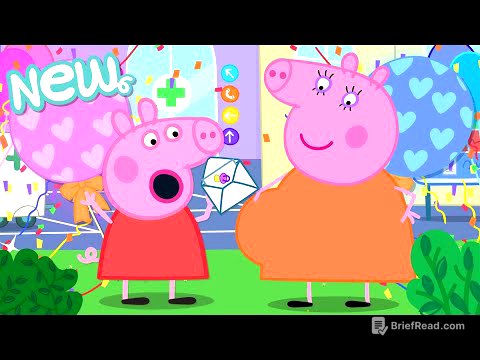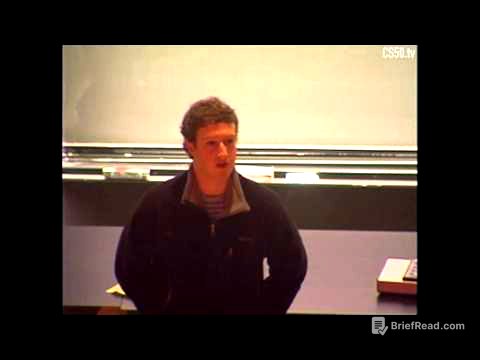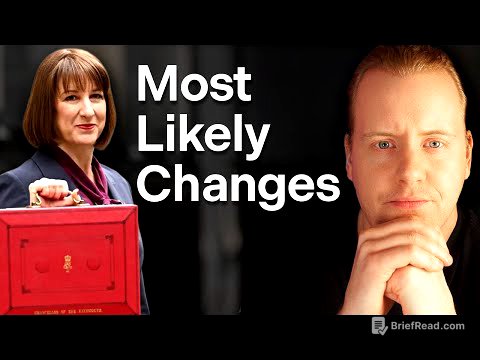TLDR;
This video outlines 21 strategies for YouTube success, emphasising that success isn't about luck but a formula. It covers content creation, audience engagement, and algorithm understanding. Key points include focusing on YouTube, mastering storytelling, understanding the power of ideas and packaging, and adapting to trends.
- Focus on YouTube as a primary platform due to its longevity.
- Master storytelling, especially the use of twists, to capture audience attention.
- Prioritise valuable content and emotional connection over perfect equipment.
Its not LUCK [0:00]
The speaker introduces the video by stating that his YouTube success, including having six million subscribers and the most viewed video on education and climate change, is not due to luck. He asserts that there is a formula to achieving success on YouTube, which he will share in the video. He mentions that one of the 21 tips he will provide is a "game changer".
Never say "Like Comment Subscribe" [0:25]
The first tip is to avoid the amateurish call to action of asking viewers to like, comment, or subscribe. Instead, encourage viewers to watch another video. This action signals to the YouTube algorithm to boost the content in the recommended section, which accounts for 75% of views.
Focus on YouTube [1:02]
The speaker emphasises the importance of focusing primarily on YouTube, allocating 80% of effort to YouTube and 20% to other platforms. He presents a graph illustrating the lifespan of posts on various social media platforms, highlighting that YouTube videos have a significantly longer lifespan (30 days) compared to X (15 minutes), Facebook (5 hours), and Instagram (12 hours). YouTube is the second largest search engine and is expected to outlast other platforms, making it a worthwhile long-term investment for building credibility, algorithm recognition, and passive income.
Short form vs Long Form [2:35]
When creating content, one must choose between short-form and long-form videos. Short-form videos attract more subscribers but of lower quality, resulting in less revenue. For example, a short-form video with 30 million views might generate $5,000, while a long-form video with the same views could generate $50,000, even with a lower CPM (cost per mille). Long-form videos attract fewer subscribers but of higher quality, leading to greater revenue. Success is possible with both formats, depending on one's style, niche, and approach to YouTube.
Storytelling [4:24]
Mastering storytelling is crucial for YouTube success, regardless of whether one chooses long-form or short-form content. Storytelling is the most valuable skill because it captures attention. The human brain is wired for stories, which are older than the written word. Modern-day storytellers are content creators, so instead of presenting boring facts and numbers, creators should tell exciting stories that people can connect with to grow their channels.
The Most Powerful Part of Storytelling [5:55]
The most powerful element of storytelling is "the twist". The reason jokes are funny is because of the twist. The twist is an engagement cheat code that adds engagement in a powerful way. The twist activates "broker's area" in the human brain, which creates an "oh my God, I had no idea" feeling, releasing dopamine and making viewers want more.
The Power of Ideas [7:26]
Focusing on important ideas is essential. Content is king, packaging is queen, but the idea is God. A poor idea can ruin everything. Great ideas come from reading more and exposing oneself to more information, which leads to more connections and spontaneous ideas. Ethically stealing ideas involves looking at what has been done successfully on a topic and elevating it with one's own signature spin. Creators should aim to make not just the best video they can, but the best video that has ever been done on the topic.
Packaging [10:06]
Packaging is crucial for video success, alongside the idea. A great piece of content can be ruined by poor packaging. Video success depends on both the idea and the packaging. Start with the title and thumbnail first, as this positions the video for success. It's not about who makes the best video, but who can create the most interesting title and thumbnail and then fit the video into that.
The Hook [11:22]
The hook is a critical part of packaging. The hook is as important as the title and thumbnail. A visually dynamic hook is needed because many people hover their finger or cursor over the video to preview it. The first few seconds are what play, so a great visual hook can stop the scroll and be played without sound. A great audio hook is also needed to create curiosity when people click on the video. The "5-second rule" applies: you have five seconds to hook a person into the video, or they will leave. This can be achieved through a question, a story, or a bold statement, all of which create curiosity.
Go Viral [15:33]
Focusing on going viral is the quickest way to success. Instead of consistently producing subpar content, aim for creating shareable, clickable, and commentable content. One video done right can be more effective than 100 subpar videos.
The Power of Timing [16:37]
Timing is crucial for going viral. Success on YouTube is like timing success in the stock market. Creating content when the conversation is trending up or at its peak is the Holy Grail. Use Google Trends and X (Twitter) to follow holidays and trending events to create massive spikes in viewership. To go viral successfully, find the sweet spot between what's happening now and what your audience likes.
CTR, AVP AVPV [18:37]
Instead of focusing on views, likes, and shares, focus on the "big three" data points: CTR (click-through rate), AVP (average view percentage), and AVPV (average views per viewer). CTR, influenced by the title and thumbnail, should ideally be above 10%. AVP, indicating watch time, should be around 60-70%. AVPV, showing how many times a viewer watches videos on your channel, should be above one, indicating an engaged audience.
Algorithm Secrets [21:31]
The YouTube algorithm is a teammate, not an enemy. Give it what it needs to do its job. The algorithm wants your content to find the perfect audience. Think of the algorithm like a sixth grader: not the smartest and easy to confuse. Clarify and hone in on your niche to help the algorithm send your content to the right people. Advertisers pay more to be seen on smaller niche channels than larger general channels.
Simplify Your Message [23:13]
Simplify the message for the viewer. Jay-Z stated that he dumbs down his content for his audience and doubles his dollars. Studies show that many adults read at or below a sixth-grade level, and viral videos are often spoken at a fifth-grade level. Use apps like Hemingway to calculate the grade level of your writing and simplify it.
Add Value [25:01]
Prioritise value. People pay for YouTube with their attention, which is the most valuable currency. Creators should aim to make free content so valuable that people would pay for it. YouTube's number one measurement of success is satisfaction, which means value.
Don't Be Boring! [26:31]
Boring is the cardinal sin of content creation. Use emotion. Humans are emotional creatures, so give people an emotional surge. The most popular influencers stimulate an emotion. Be intentional with emotions, and don't be afraid of tension. Use music and sound effects to create an emotional surge. Ask yourself how you want viewers to feel when creating a video.
F Fear [29:40]
Overcome fear. Six words that will kill your dreams are: "What will they think of me?" Life has given us mental BBLs (big butt in our mind), such as "I'm not ready" or "I'm not talented enough". Just go for it and show up. The difference between successful YouTubers and those who aren't is that successful ones go for it.
Authenticity over Equipment [30:49]
Focus on authenticity over equipment. Authenticity is beautiful, and vulnerability is magic. New and smaller creators are being pushed more than ever before. You don't need Hollywood edits or productions. YouTube is coming back to authenticity and creativity. Connect with your audience. The equipment doesn't matter as much as the authenticity and energy.
Treat YouTube like a Business [32:32]
Treat YouTube like a business, but not a job. YouTube is where you share what you're passionate about. Don't treat it like a job, as it should free you, not become your prison. Be organised, optimise, automate, eliminate, or delegate tasks to stay in your genius zone.
USP [33:32]
The success of every channel depends on its unique selling proposition (USP). Make a list of what everyone else is doing and don't do that. Stand out through your dress, speech, or role. Get clear on your USP, your secret sauce. Caring is a great USP; if you can out-care your competitors, you will win. People don't care how much you know until they know how much you care. YouTube is all about community.
Follow Trends [35:03]
Keep track of trends. Blockbuster declined to buy Netflix for $50 million, believing people would always rent DVDs. Netflix revolutionised movie watching, while Blockbuster faded into obscurity. Behaviours and trends change, so pay attention to them. Don't get caught in the mindset that what worked last year will work this year. Be a constant learner and keep your finger on the pulse of what's happening in your niche and YouTube as a whole. Don't be afraid to re-educate, reinvent yourself, or pivot. YouTube started as a dating site called "Tune In and Hook Up" but pivoted based on trends.
Have a Mentor [37:44]
Having a mentor is the most important tip. Learn from someone who has done what you want to do, not just talked about it. Every athlete has a coach, which is a cheat code.
